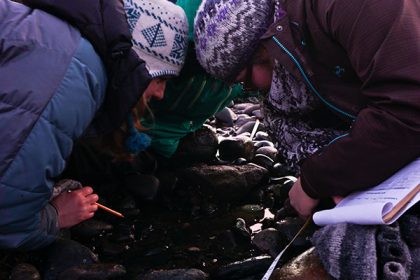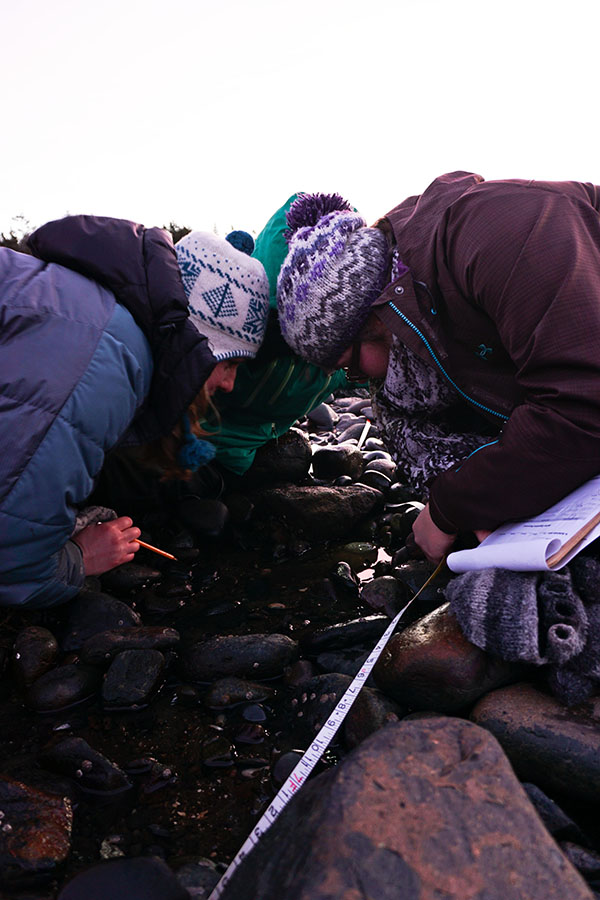
 According to The World Watch Institute, nearly half of the fish consumed today is raised on a fish farm, not wild caught. While both harvest of wild fish and fish farming have their cons, could aquaculture be a real opportunity to increase sustainable food production in NH? Many political leaders, humanitarian organization and scientist are looking to aquaculture as the way move forward in addressing the challenge of feeding the growing human population. Aquaculture is worth a closer look.
According to The World Watch Institute, nearly half of the fish consumed today is raised on a fish farm, not wild caught. While both harvest of wild fish and fish farming have their cons, could aquaculture be a real opportunity to increase sustainable food production in NH? Many political leaders, humanitarian organization and scientist are looking to aquaculture as the way move forward in addressing the challenge of feeding the growing human population. Aquaculture is worth a closer look.
In January, Environmental Science majors from Plymouth State University explored aquaculture through readings, discussions, site visits, and hands on fieldwork. We weighed the pros and cons of aquaculture as we explored the environmental impacts, potential for sustainable food production, and the role aquaculture plays in the Gulf of Maine economy and culture.
We visited the USDA National Cold Water Marine Aquaculture Centerand spent a half-day assisting on site: feeding, tagging, and moving hundreds of salmon at various stages of development. Then we headed to The Center for Cooperative Aquaculture. We looked specifically at Yellow Tail, Cod, and Halibut breeding projects, as well as seaweed cultivation. Of course exploring aquaculture in Maine will invariably lead to lobster. Lobster plays a significant role in the culture, ecology and economy of Maine. There is a fair amount of attention to policy around catch regulations, but as we know that is only on aspect of supporting a sustainable fishery. Thanks to tracking technologies lots has been discovered about lobster behavior, but of course questions remain. Researcher Diane Cowan and others are curious about where juvenile lobsters hide out and how to best protect this species in the juvenile stage. To support this research we looked for juvenile lobsters in the rocky intertidal. We did not find any, but null data are important too. Check out The Lobster Conservancy for more on this research.
The excursion prompted students to think deeply about their food choices and their future careers in science. Several students shared reflections on the experience:
“We woke up at 4:30 am in order to catch the low tide to conduct a transect study for juvenile lobsters. We were tired, cold, and severely caffeine deprived. Reaching our bare hands into freezing tidal water to scoop what we hope is an interesting critter. And even though it may sound miserable, not one person complained about being up that early, or how cold it was. That’s because we were all feeling so alive! We weren’t sitting in a classroom half listening and looking out the window wishing we were out there. We were there.” – A. Spadafora Class of 2015
“Over the trip I did a lot of reflecting and thinking about what it means to be on Earth today and the times we are going through. I thought about human history, the voyages of so many explorers, and where conquests of war have brought us. We’re at the brink of civilization’s next level and we need to fuel and feed everyone while maintaining happiness and a sound conscious doing this. We are lesser gods, given our ability to propagate fish and other lifeforms outside their natural habitat. Such feats I can only hope are utilized wisely going into the future, seeing so much agriculture has already been subjected to artificial modification. While I’m not so sure I want to go into aquaculture I see some promise in permaculture or local gardens.” –D.McMillian Class of 2015
“I like seafood. As a consumer of seafood (when finances allow), I have considered the merits of wild versus raised fish. This usually occurs in front of a counter at the grocery, or while gazing over a menu. This creates a pleasant state of detachment, where I simply choose between two very similar looking pieces of fish flesh. I like to assume that I understand the distinctions that come with each fish. Having visited the USDA Aquaculture Research Center and Center for Cooperative Aquaculture, I now realize that my prior view was quite limited. Considering aquaculture methods from afar is much different from seeing aquaculture in real time. I was especially amazed with the halibut stock. The halibut is a mysterious bottom dwelling fish, somewhat of a charismatic megafauna of the deep cold waters. To farm these fish takes specialized facilities and many years. The brood stock was upwards of 20 years old, and the fish we were given to consume for dinner had lived for almost a decade. Seeing these fish, along with yellowtail and cod, being raised simply to feed us was eye opening and valuable. There are tradeoffs to these operations that must be considered, and the best way to inform that thought process is to see it.” –J.Loos MS Class of 2015
In New England aquaculture is up and running. Research on alternative feeds and improved technologies to reduce negative environmental impact are underway in Massachusetts, Maine, Connecticut, and New Hampshire. Numerous species are being produced for consumption in the region, including Salmon, Oysters, Trout, and Yellow Fin Tuna. New England Fisheries hosts an informative web page, Talking.Fish.org if you are hungry for more about aquaculture. There are several good books on the subject too: Will Farmed Fish Feed the World?, American Catch, and Four Fish by Paul Greenberg. Chef Dan Barber’s TEDtalk How I fell I Love with a Fish also offers a perspective on aquaculture.
Rachelle Lyons is a research assistant faculty at Plymouth State University (PSU). She has a background in Education and Environmental Science and conducts research on local scale environmental stewardship and food system sustainability.
The Field Engagement Program is an initiative of Center for Rural Partnerships aimed at providing applied and service learning opportunities and enrichment experience for PSU students.




